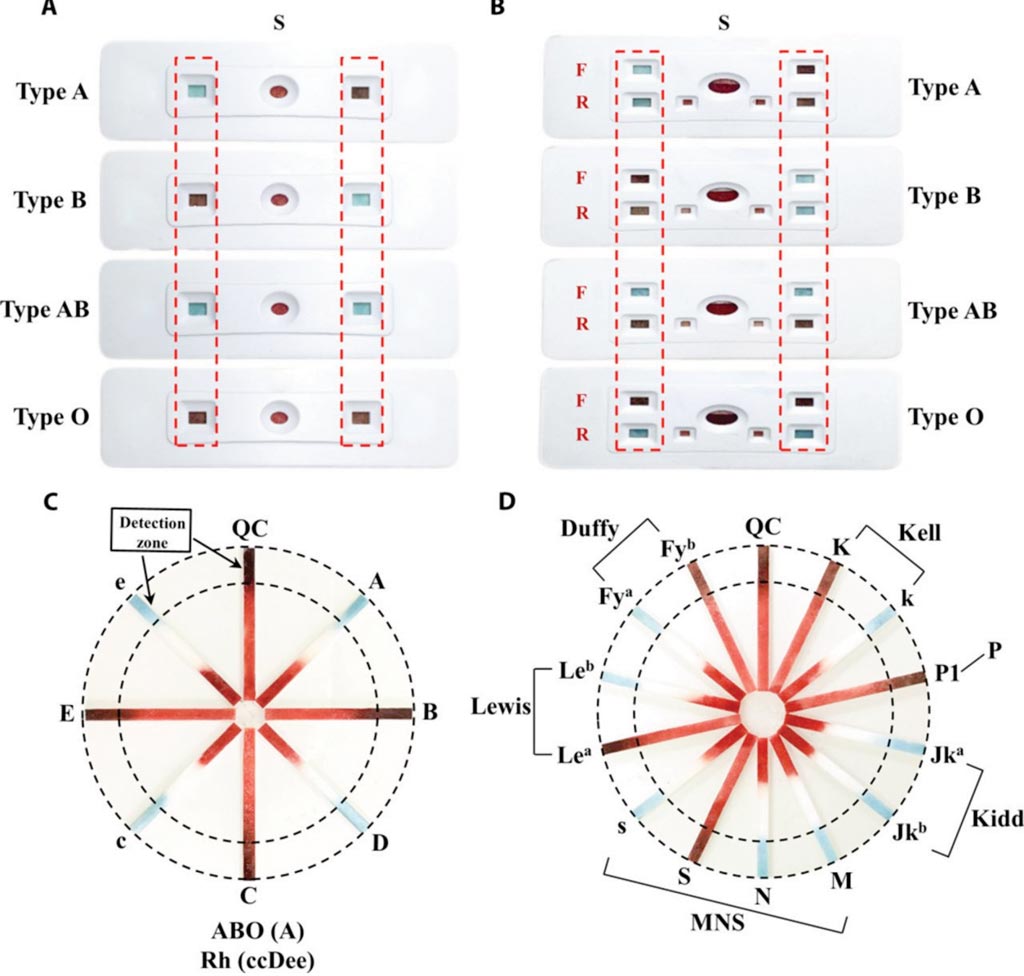POC Assay Developed for Reliable Blood Grouping
By LabMedica International staff writers
Posted on 07 Apr 2017
Rapid and accurate blood grouping plays a critical role in multiple scientific disciplines, particularly in the biological and medical sciences and especially for pregnancy, blood transfusion, and bone marrow transplantation.Posted on 07 Apr 2017
A fast, accurate, and versatile paper-based blood test has been developed that could be performed without the need for specialized equipment providing a more cost-effective strategy for blood grouping. The blood typing assay is based on the color change that occurs when a common pH indicator dye reacts with blood.

Image: ABO grouping for A, B, AB, and O as indicated by the presence of teal color in the observation zone (red dashed box). Images of multiplexed assays testing (C) ABO/Rh and (D) rare blood systems (Photo courtesy of Third Military Medical University).
Medical scientists at the Third Military Medical University, Chongqing, China, assayed 3,550 venous and finger prick blood samples on a paper-based test using bromocresol green. Blood groups were primarily identified by a diagnostic laboratory using the BioVue gel-card assay. The paper-based assay used immobilized antibodies and bromocresol green dye for rapid and reliable blood grouping, where dye-assisted color changes corresponding to distinct blood components provide a visual readout.
ABO antigens and five major Rhesus antigens could be detected within 30 seconds and simultaneous forward and reverse ABO blood grouping using small volumes (100 μL) of whole blood was achieved within two minutes through on-chip plasma separation without centrifugation. A machine-learning method was developed to classify the spectral plots corresponding to dye-based color changes, which enabled reproducible automatic grouping. Using optimized operating parameters, the dye-assisted paper assay exhibited comparable accuracy and reproducibility to the classical gel-card assays in grouping 3,550 human blood samples. When translated to the assembly line and low-cost manufacturing, the proposed approach may be developed into a cost-effective and robust universal blood-grouping platform.
The authors concluded that the assay not only provides a new strategy for blood grouping but can also be used in time- and resource-limited situations, such as war zones, in remote areas, and during emergencies. Characterized by an intensified and streamlined workflow capability, the proposed blood-grouping assay may be further developed into highly compact and fully automatic platforms that are highly efficient and economical, making large-scale manufacturing possible. The study was published on March 15, 2017, in the journal Science Translational Medicine.














